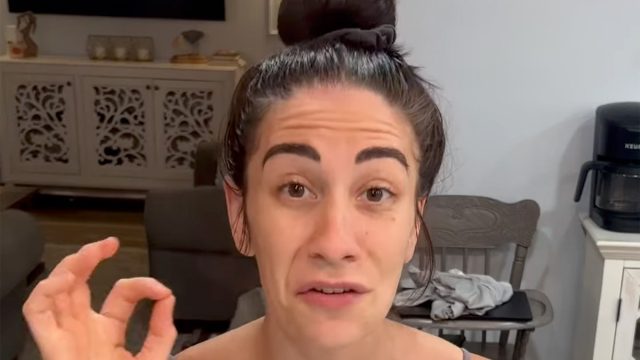Fitness Pro Reveals Top 5 Mistakes Preventing You From Toning Up

Are you trying to tone up, but can't seem to achieve the desired definition? You might be making a common mistake, even if you think you are doing everything right. AnnMarie Lawrence is an IFBB pro and fitness coach who helps "busy working moms lose weight WITHOUT spending hours in the gym or kitchen," she writes in her Instagram bio. In a recent post she gets real about fat loss, revealing some of the top faux pas people make while trying to get into shape. "5 mistakes you're making if you're not getting toned even if you're working out and eating high protein," she says, also offering tips on "what to do instead."
You Aren't Progressive Overloading
The first mistake preventing you from toning up? "You're NOT progressively overloading," she says. "Start tracking your weights and reps—aim to lift heavier or do more reps each week."
RELATED: This Is Exactly How to Lose Body Fat This Year
You Aren't Eating the Right Amount
Mistake number two is, you're eating "too much or too little," she says. "Dial in your nutrition. I am happy you're eating protein BUT we also need to focus on your caloric intake. Tracking both macros and calories will help give you the data you need to guarantee your success."
You Aren't Consistent
Mistake three? "You're NOT consistent," she writes. "Show up regularly—consistency beats perfection every time. IF you aren't training or eating accordingly MOST of the time, you will get sub par results and tend to end up frustrated."
You Aren't Getting Enough Rest
You might also be sweating too much. "You're not getting enough rest for recovery," is mistake number four. "Prioritize 6–9 hours of quality sleep and schedule rest days. Sometimes we tend to over do it especially when we first start a health and fitness journey. But remember muscles rebuild during rest!" she says.
RELATED: 8 High-Protein Foods with Nearly Zero Calories That Melt Fat.
You're Doing Too Much Cardio
And the final mistake you might be making? "You're doing too much cardio," she says. "Focus on strength training and balance it with moderate cardio! Over doing it with HIIT classes and focusing on calories burned will hurt more then help! The focus in your workouts should be increasing strength and endurance! The nutrition is where we dial in the fat loss!" And if you enjoyed this article, take advantage of these 15 Quick Ways to Lose Body Fat Percentage in a Week.




